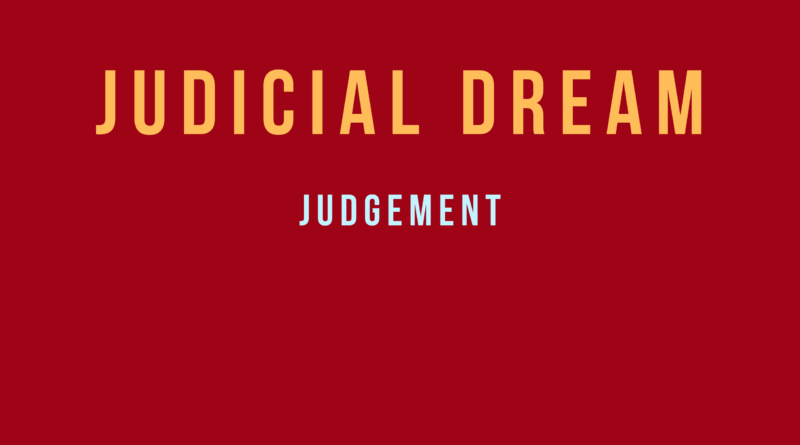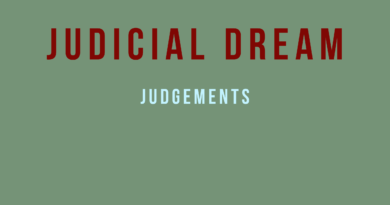MINERVA MILLS VS UNION OF INDIA
Give a detailed summary of Minerva Mills v. Union of India 1980 AIR 1789 case.
• Facts of the Case
Minerva Mills is a textile company located in Karnataka, which was taken over by the Central Government in 1970. The Central Government appointed a committee to investigate the company due to a decrease in production. The decision to take over the company was made under Section 15 of the Industries Act, 1951 (now known as the “Industries Act”.
The order to take over Minerva Mills was made under section 18A of the Act. The order was passed by the NCLC on the ground that the company’s management had mismanaged its affairs. This decision made it easier for the Central Government to nationalize the company.
Minerva Mills was then taken over by the Government of India under the Sick Textile Undertaking Act, 1974 (now called the “Sick Textile Act”. The takeover was challenged before the High Court but the petition was rejected. Minerva Mills then moved the Supreme Court and filed a Writ Petition based on Article 32 of the Constitution.
• Issues Involved
- Whether the amendments introduced by Sections 4 and 55 of the Constitution 42nd Amendment) Act, 1976 damage the basic structure of the Constitution?
- Whether directive principles of State policy contained in Part IV can have primacy over fundamental rights conferred by Part III of the constitution?
• Arguments of Petitioner
The petitioners argued that there are inherent or implied limits on the power to amend, and thus Article 368 does not give Parliament the power to amend the fundamental or essential elements of the Constitution in such a way as to render them meaningless or irrevocable.
The fundamental principles of the Constitution are based on the principle that they are the necessary ends of government and can only be achieved by the permissible means listed in Part III.
If the 42nd amendment of Article 31C is upheld, it will give carte blanche to the legislature and executive, both in the centre and in the states, to destroy the fundamental freedoms and create an authoritarian regime as if there is a permanent emergency.
It is inconceivable that the destruction of fundamental freedoms guaranteed in Part III would be necessary for attaining the object of certain directive principles.
The Indian Constitution is based on the equilibrium between the parts III and IV. Giving one part of the Constitution precedence over the other disturbs the equilibrium of the Constitution. The harmony and balance between the fundamental rights and the directive principles is an important feature of the Constitution’s fundamental structure.
The effect of immunity to laws adopted for the purpose of implementing any of the directive principles would, in fact and substance, erase Articles 14 and 19 of the Constitution and would have a negative impact on its fundamental structure.
As a result of the exclusion of judicial review by the 42nd Amendment Act, 1976, in which Sub-sections 4 and 5 of Article 368 of the Constitution were inserted, the limitation on amending power of the Parliament would disappear and its amending power would be enlarged.
• Arguments from the Respondent
Ensuring the implementation of the directive principles by removing the obstacles to the legal process cannot be said to erode or damage the fundamental elements of the Constitution. Furthermore, laws made for attaining the objectives of part IV would have to be in the public interest.
A law which satisfies the requirements of the directive of article 38 is not capable of eroding fundamental freedoms or eroding the fundamental structure of the Constitution because that structure is based on the principle of equity- social, economic, and political.
In the light of the fact that the unamended provision of Article 31C has been confirmed by the majority judgment of the Court of First Instance of the Supreme Court of India, the amended provision must be declared valid, particularly since it does not bring about a qualitative change as compared to the provisions of the original article and falls under the broad powers of amendment provided for in Article 368.
Furthermore, since the directive principles are fundamental to the governance of the state, no alteration of the Constitution to attain the objectives of the directive principles can change the fundamental structure of the state.
The question is too broad and academic, and it is the habit of the Court of Justice not to deal with academic matters. The deprivation of certain or fundamental rights for the sake of the well-being of the people cannot amount to the destruction of the Constitution’s fundamental structure.
• Judgment
Section 55(4) and (5) of the 42nd Amendment Act, 1976 introduced clauses 4 and 5 respectively in the existing Article 368 of the Constitution, Article 4 provides that, “any amendment made or alleged to have been made pursuant to this Article, whether before or after the initiation of Section 55(2) of the Constitution, shall not be challenged in any court.” Paragraph 5 of the article reads as follows: “For the avoidance of doubt, it is declared that there is no restriction on the power of Parliament to amend, add to, vary or repeal provisions of this Constitution pursuant to this Article.”
The Court held that the amending power of Parliament to amend the Constitution was one of the fundamental characteristics of the Constitution but that this power was limited in a manner that did not jeopardise the fundamental nature of the Constitution (as also held in the judgment of the Court of First Instance of the Supreme Court of India in Kesavananda Bharat). However, these provisions certainly give an absolute power to the Parliament.
Parliament cannot by virtue of the exercise of its power to amend Article 368 extend to itself the power to repeal or to abrogate or to destroy the fundamental and essential characteristics of the Constitution. The exercise of the limited power cannot, by reason of its exercise, convert it into an unlimited power. Section 55(5) was unanimously declared unconstitutional.
Section 4 of the Constitution, which removed the ability of the courts to review constitutional changes, was also ruled unconstitutional because it made the entire section 3 of the Constitution unenforceable, thus expanding the power of the government. It also eliminated the most important right, which is the right to constitutional remedies. Article 32 is invalid.
The court also noted that if a constitutional amendment could not be declared invalid even if it destroyed the fundamental fabric of the Constitution, then a law passed in pursuit of such an amendment would not be subject to judicial review because it would be protected by the constitutional amendment, which the courts would not be able to invalidate.
Article 13 of the Constitution becomes a dead letter, as even ordinary laws escape judicial review because they are passed by virtue of a constitutional amendment that cannot be challenged. Clause 4 was viewed as a means to achieve clause 5, thus undermining the whole concept of democracy.
The amendment made by Section 4 of 42nd Amendment Act, 1976 in Article 31C gave the Parliament the power to place all the Directive principles mentioned in Section 4 above the fundamental rights laid down in Section 3 of Constitution. The SC held this amendment as unconstitutional. The SC observed that the fundamental freedoms of the Constitution have always been kept in check by the provisions of the DPSP. Therefore, to place one directive principle at the expense of the others would break the equilibrium that the founders of our Constitution sought. This equilibrium is at the core of our Constitution and Section 4 stands in the way of our identity as a nation.
• Case Summary
In the wake of the judgment delivered by the Supreme Court in the case of Indira Gandhi versus Raj Narain which was a major setback for the Government of India, the 42nd Amendment was passed by Parliament in order to limit the powers of the judiciary over any amendment passed by Parliament. The amendment sought to bring the harmony between the fundamental rights and the directive principle of the state policy.
The majority opinion claimed that the amendment created an imbalance and therefore it should be annulled. They argued that the fundamental rights have a special place in civilised societies and are the heart and soul of the Constitution. Therefore, the amendment gave absolute power to the Directive principle of the State policy even though it is contrary to the fundamental right of the Constitution.
They argued that a proper balance should be struck between both and no one should enjoy absolute power over another without any condition. The minority decision was delivered by Justice Bhagwati who held that the directive principle of state policy nurtures the foundations of the democracy and plays a vital role in the static delivery of the fundamental rights.
The majority opinion of the judges was correct because if directive principles predominate over fundamental rights in the name of social welfare, various changes would be made that would be discriminatory and violate individual liberty by being unconstitutional.
On the other hand, the full bench of judges was in favour of striking down Section 5, which gave unlimited power to the Parliament to amend the Constitution. The judges were correct in their pronouncement as they sought to create a balance between different organs of the democracy. This amendment would have given the Parliament untenable power and would not have been subject to judicial review.
The court striking it down found that the Constitution’s limited amending power is a part of its fundamental structure. The court allows the Parliament to make changes to the Constitution, but it should not be contrary to the fundamental structure.


